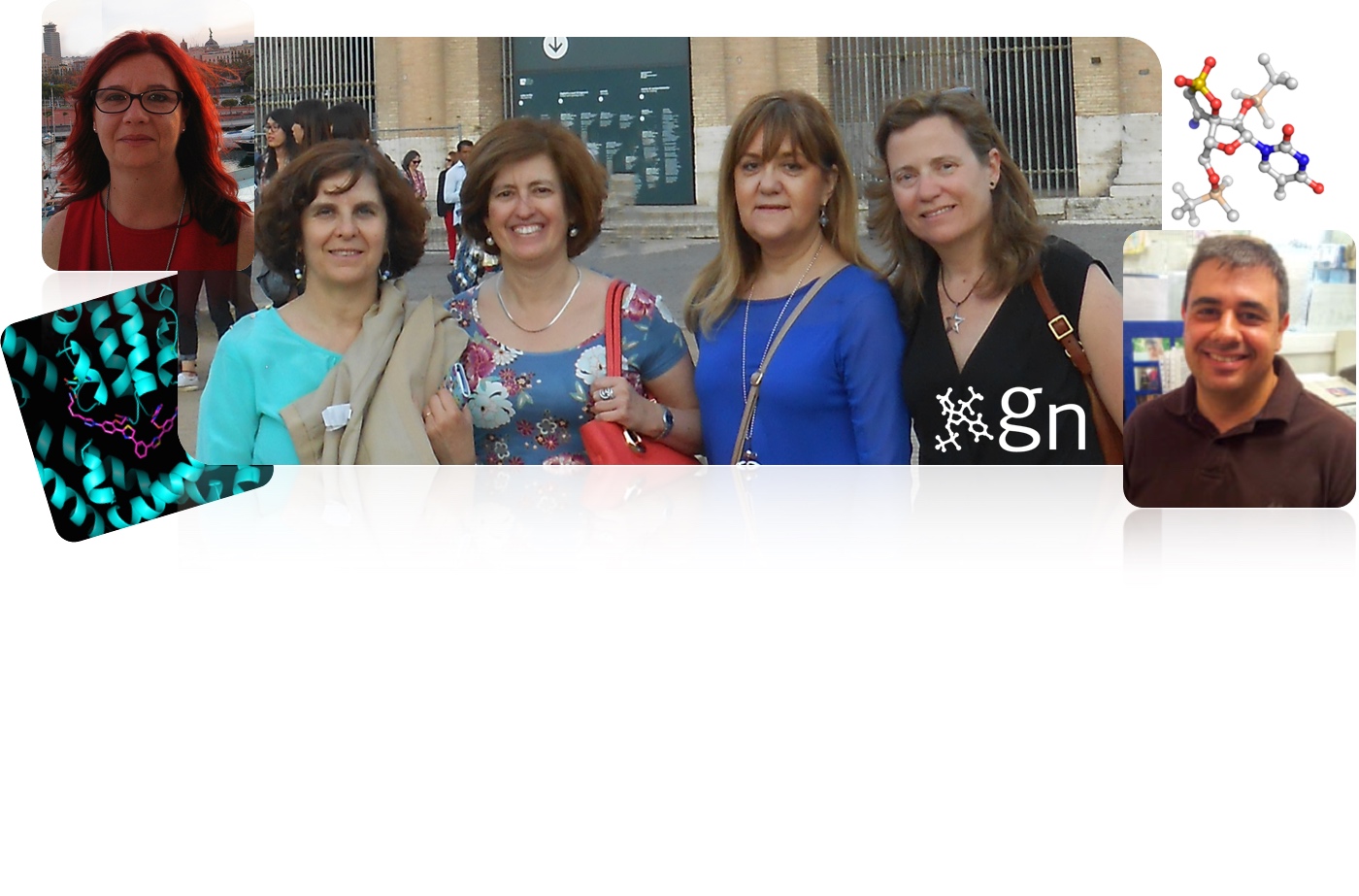The global aim of the research developed by the group “Nucleosides and analogues as a source of bioactive molecules” is the search for new efficient and selective molecules against diseases caused by different pathogens or in tumor processes, through the interaction with new targets or by using novel approaches against previously explored targets. For the design and development of these molecules, the wide experience of the group members in medicinal chemistry, synthetic procedures, computational chemistry, conformational analysis, determination of drug-type properties, etc., is combined with external collaborations for the biological evaluation of compounds as well as for the study of protein-ligand complexes by X-ray crystallography and cryo-electronic microscopy (Cryo-EM) techniques. The final aim is to contribute to the development of drugs in crucial health areas, to better understand the molecular basis of the diseases and to discover novel inhibition mechanisms, alternative to the currently available, that could result in a lower risk of resistance and give rise to innovative drugs.
The research of the team is carried out in a translational manner in close collaboration with prestigious national and international research teams of complementary expertises to our own. The group is and will always be open to accept the challenge of developing drugs against new pathogens, new epidemics and new emerging diseases.
The group has long and highly recognized experience in the design and synthesis of molecules of different nature: nucleos(t)idos, carbohydrates, peptides, small dendrimers, heterocycles or polyphenols and, more recently, PNAs and fluorescent probes for the labelling of compounds with biological activity. All these chemical entities are part of our unique and diverse in-house library of compounds available for different biological tests.
After a long trajectory in active compounds against HIV, either at the reverse transcriptase or at the entry process, recognized in 2001 with the DESCARTES AWARD of the European Union for the excellence of the research in collaboration with European teams, our current efforts are directed towards (re)emerging viruses. The group has recently discovered compounds with new mechanisms of action against different viruses: a) polyanionic compounds as dual inhibitors of HIV and enterovirus 71, which interfere at early stages of the life cycle of both viruses; b) triazolopyrimidines with activity against chikungunya virus, inhibiting the mRNA capping process; c) serin-protease inhibitors with activity against influenza and other respiratory viruses, and fusion inhibitors of influenza viruses.
The team also develops compounds against Leishmania infantum designed as inhibitors of essential and exclusive dimeric enzymes of the parasite such as trypanothione reductase (TryR) and superoxide dismutase (SOD), by exploring the modulation of protein-protein interactions as a novel mode of inhibition of these enzymes, that may lead to innovative antiparasitic agents.
In the field of antitumor agents, we have worked on compounds that inhibit tumor vascularization through the interaction with the colchicine site in tubulin. Structural data and computational tools for both, the identification of new chemical entities (hits) and the optimization of their interaction with the target, have been used, resulting in compounds with a high affinity for tubulin and potent antitumor. We also work in mimetics of natural products.
Recently, a new line of research has been initiated directed to the development of innovative antibacterials against “non-classical” key transpeptidases in the resistance to antibiotics, in collaboration with pioneering and prestigious teams experts in structural biology.
Finally, the group develops two cross research lines of wide application in different therapeutic areas. The first, a new prodrug strategy, very successful and effective in improving the solubility and bioavailability of compounds and drugs of different nature, based on the endogenous enzyme DPPIV/CD26. The second is focuses on the design of ligands and the study of ligand-protein interactions using computational methods (virtual screening, docking, molecular dynamics, etc).



